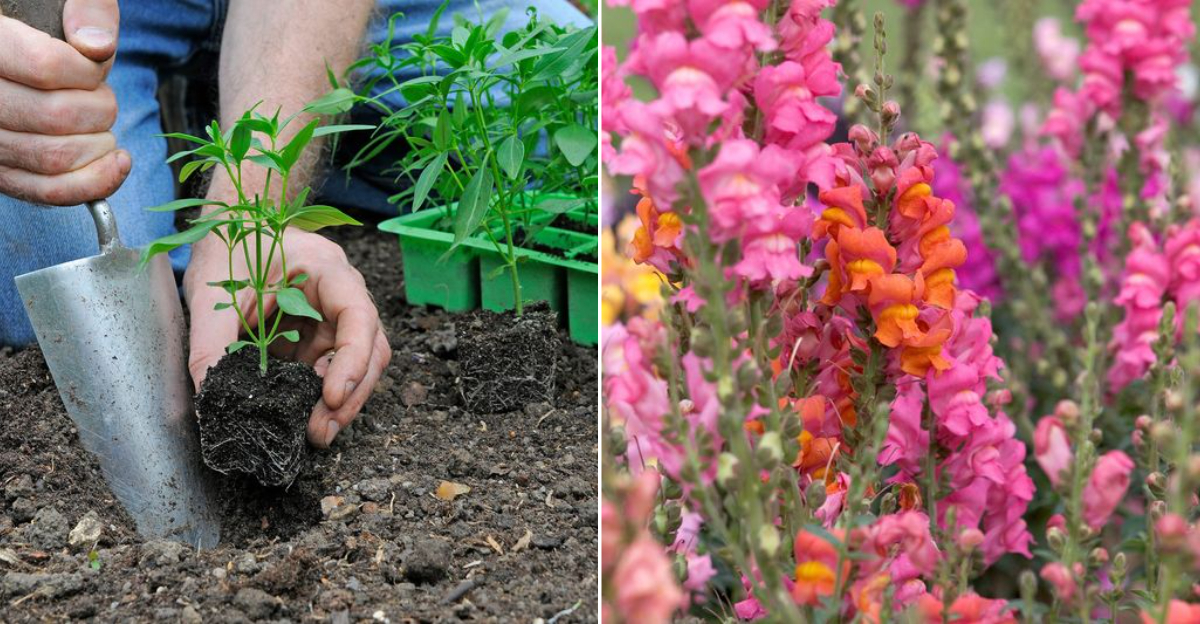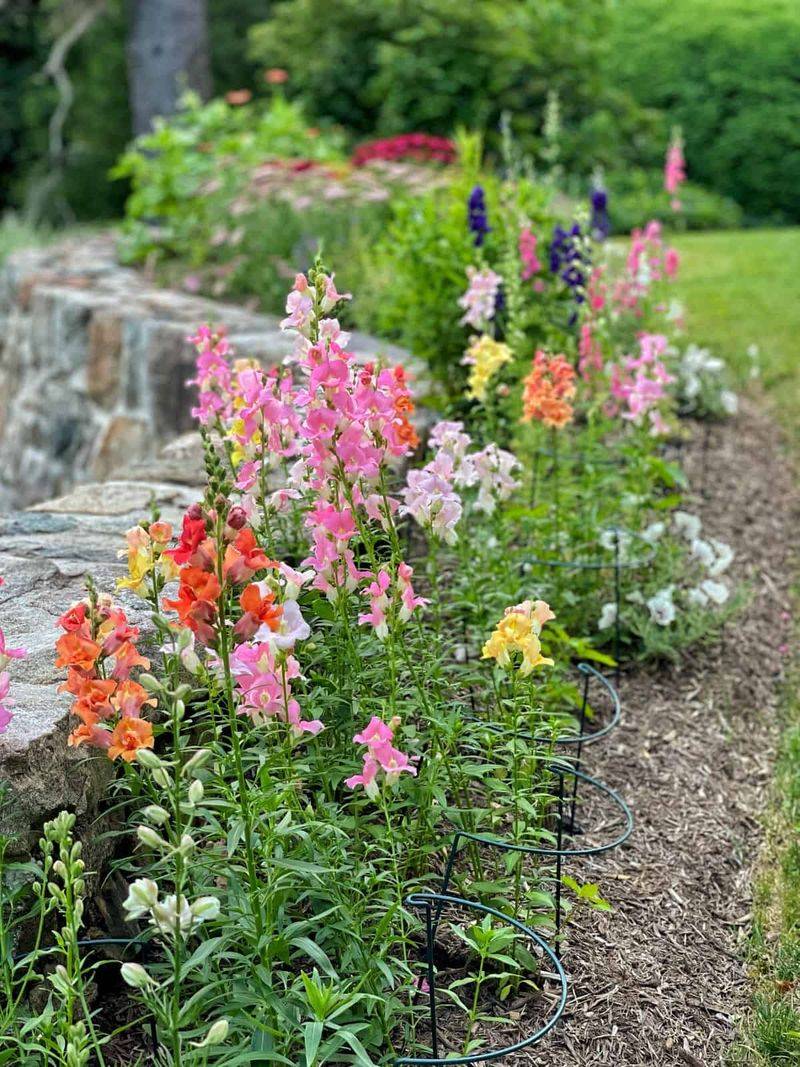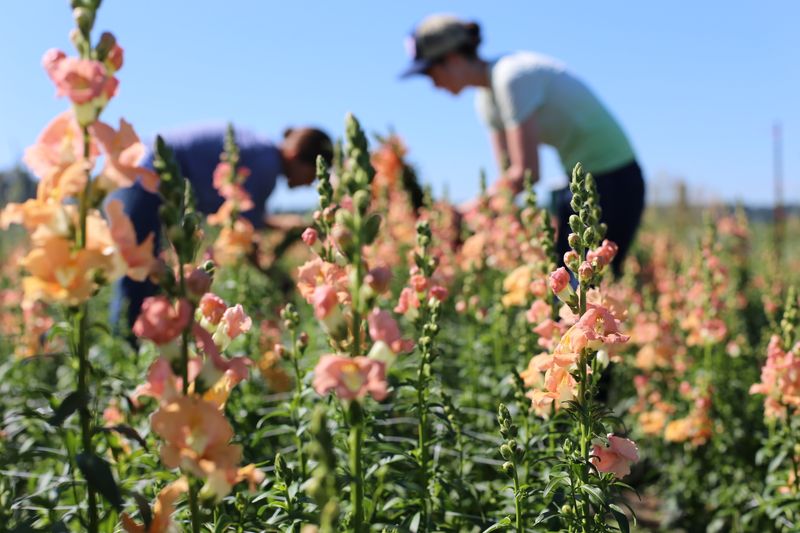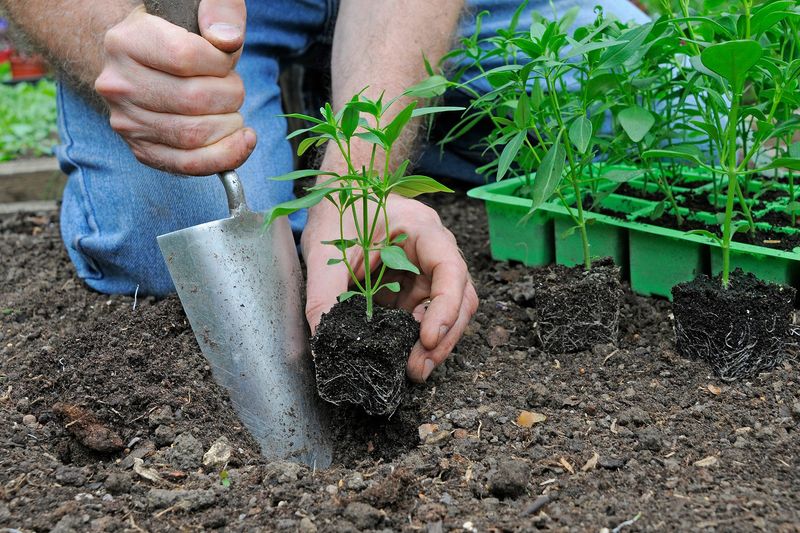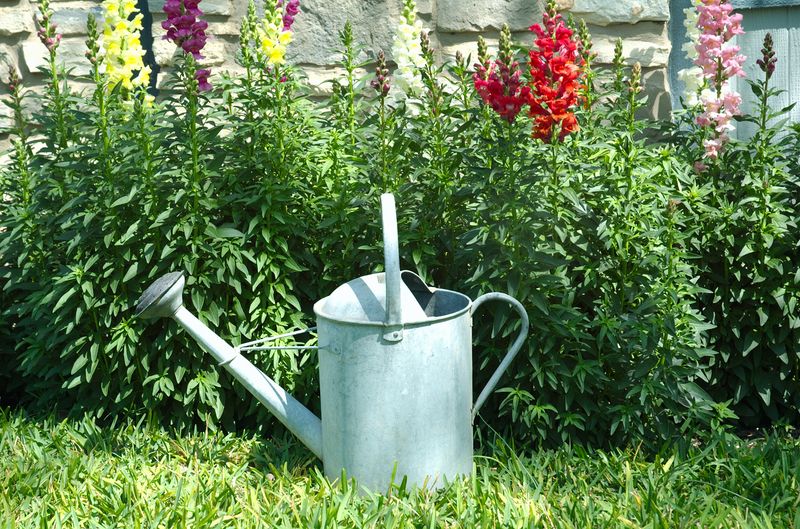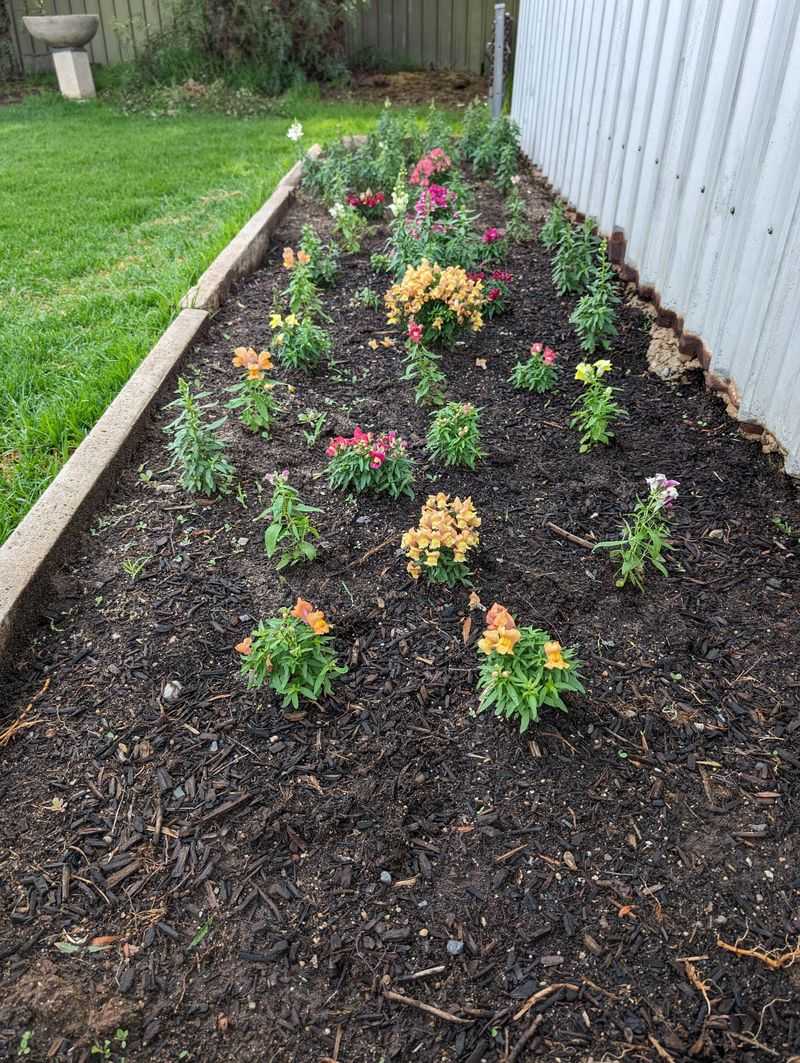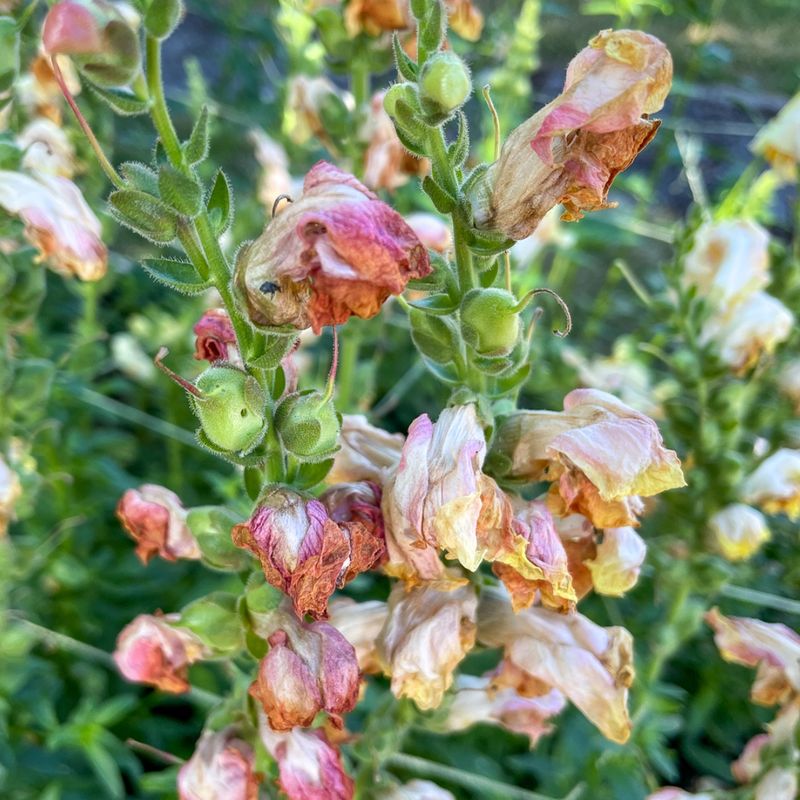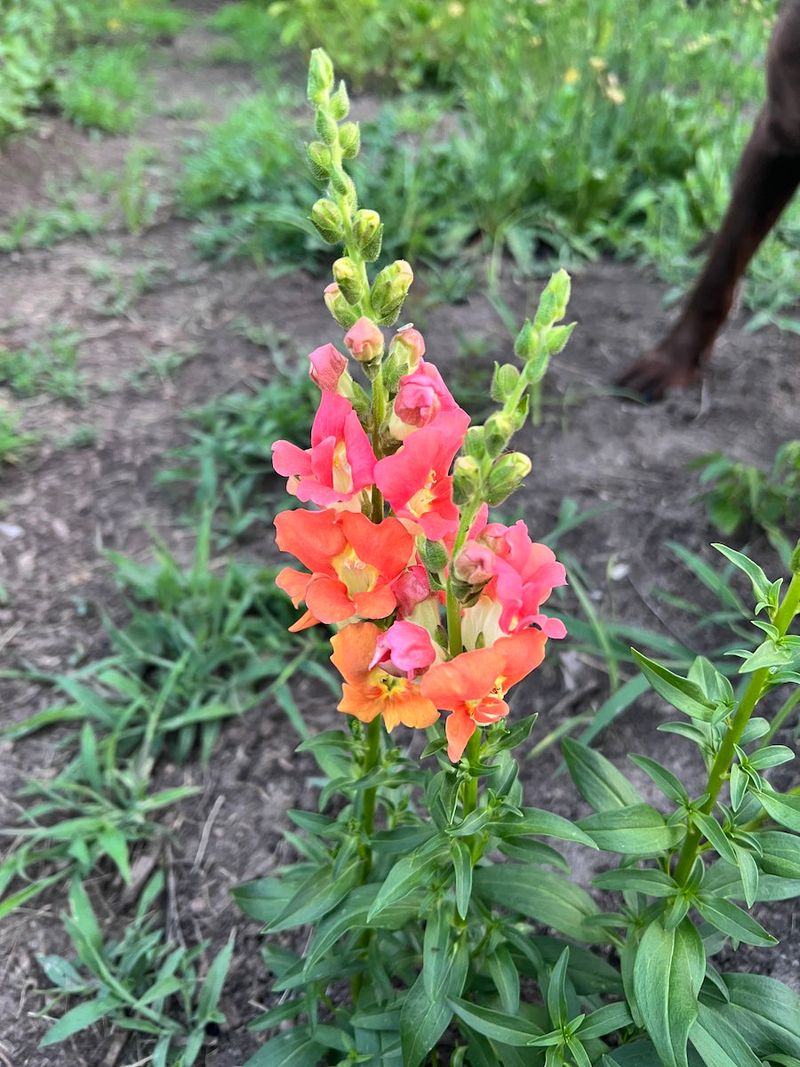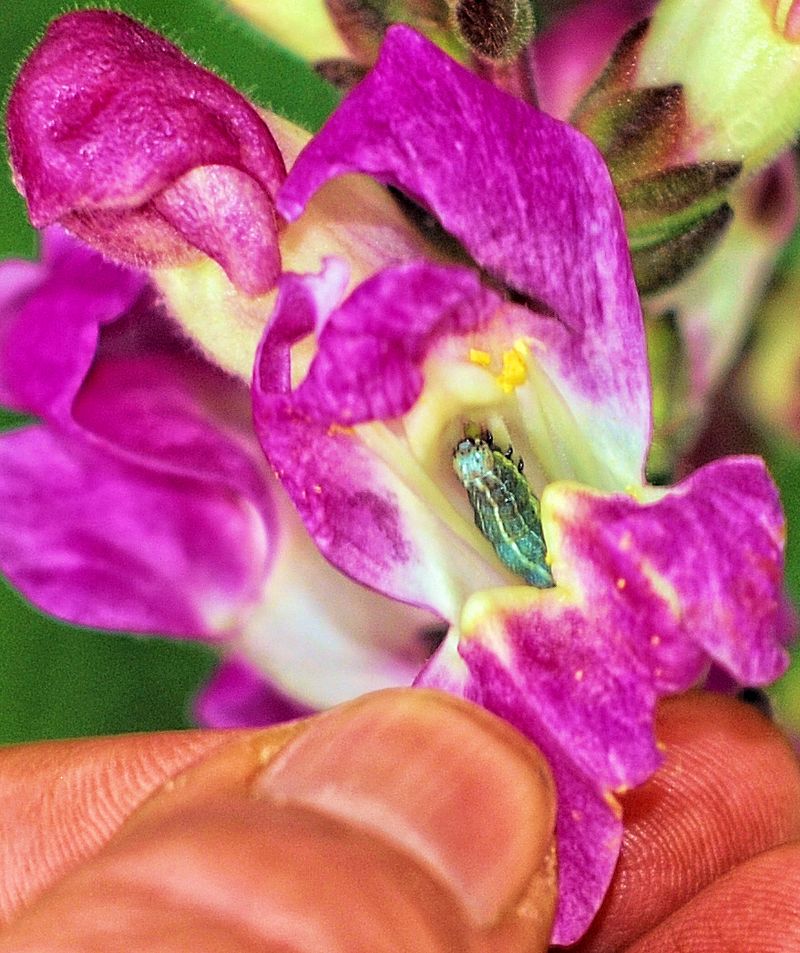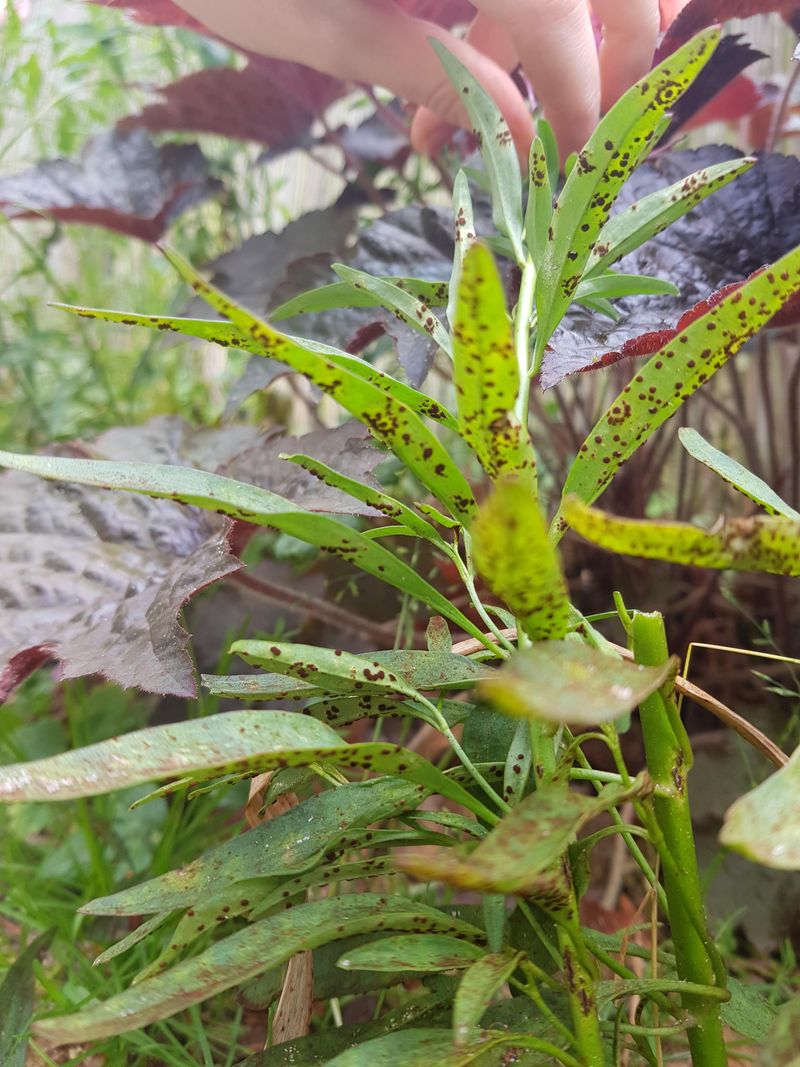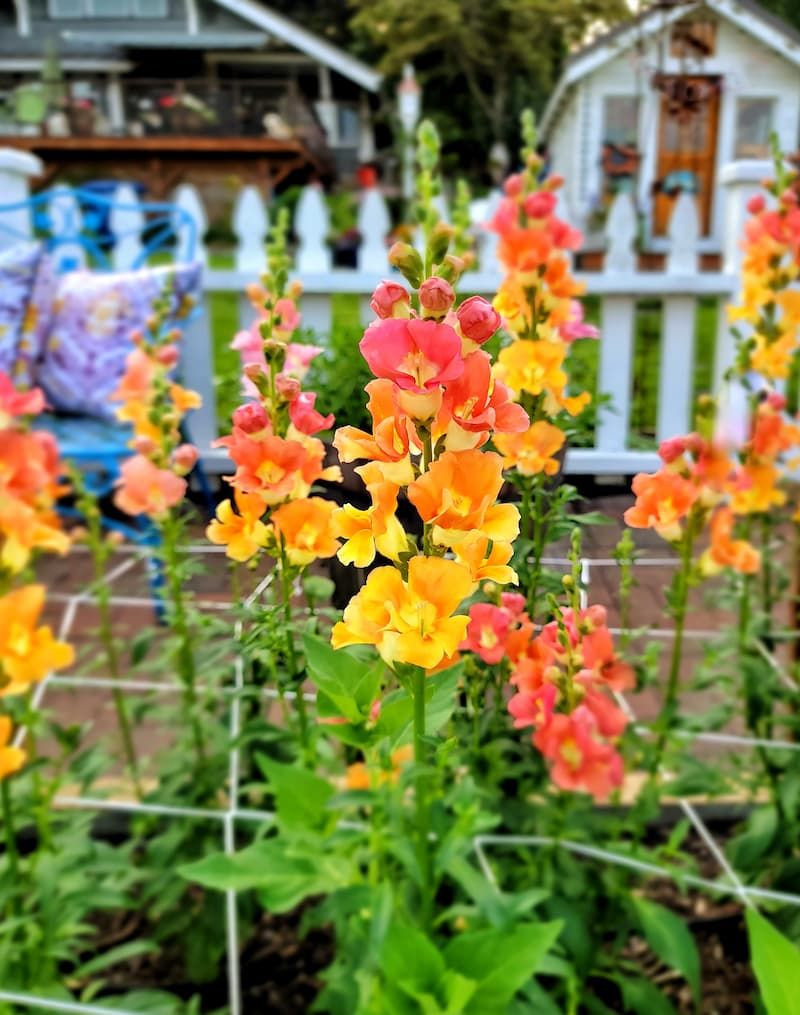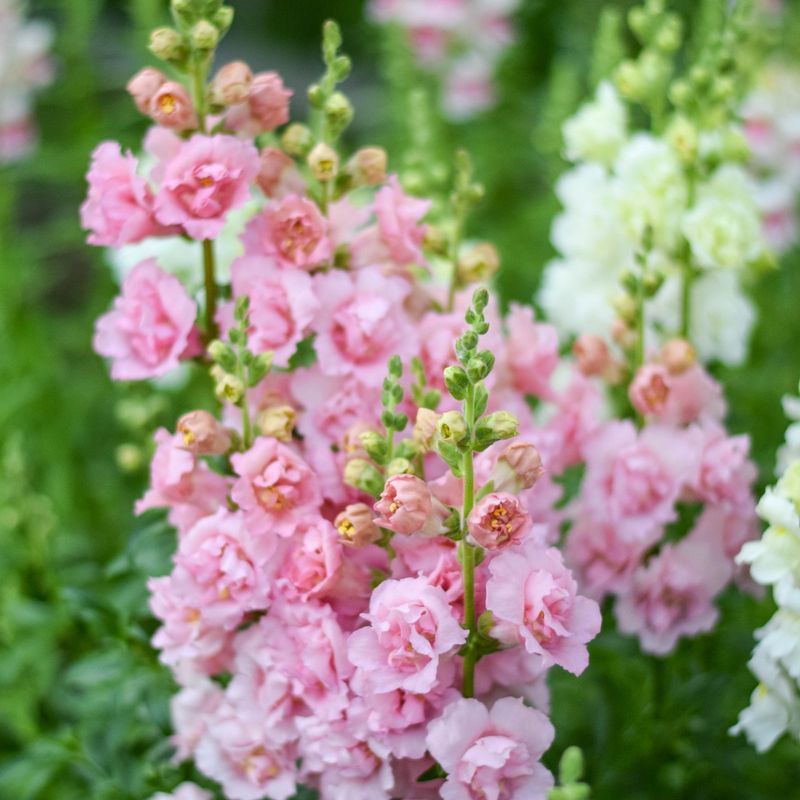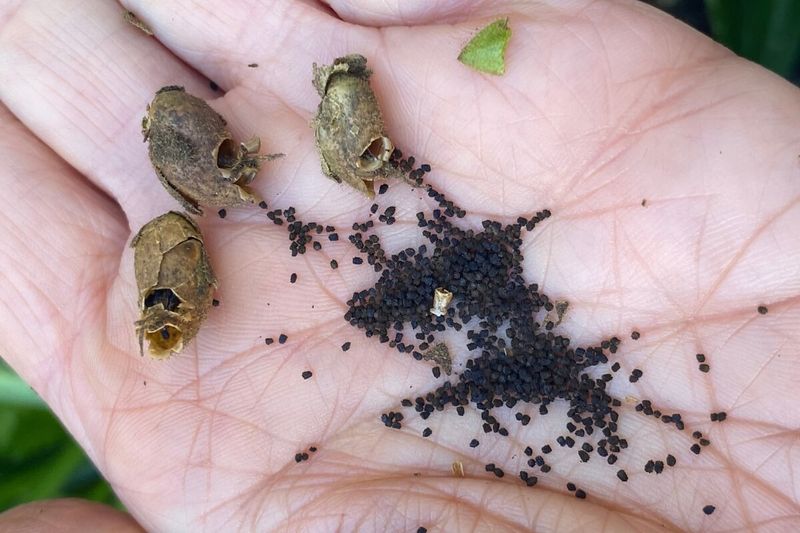Snapdragons are vibrant, charming flowers that can brighten any garden, but they can be tricky to grow if you don’t know what you’re doing. Avoid these common mistakes to keep your snapdragons thriving all season long!
1. Planting at the Wrong Time
Snapdragons prefer cooler temperatures. Planting them too late could stress them in summer heat. To thrive, plant them in early spring when temperatures are mild. If you’re in a warmer climate, consider fall planting to avoid harsh summer conditions.
Timing is crucial to ensure these blooms remain vibrant and healthy. Early planning can lead to a season full of color and life. So, mark your calendar and prepare your garden for those cooler months.
Many gardeners miss out by not aligning their planting schedule with the climate’s natural rhythm. Ready your seeds early for a stunning display.
2. Choosing the Wrong Location
Snapdragons crave sunlight. Planting them in shaded areas can lead to leggy, weak growth. Ensure your snapdragons receive at least six hours of direct sunlight daily. Look for a spot in your garden that bathes in morning sun, as this is less intense.
Too much shade can deprive them of the energy needed for robust growth. A sunlit location encourages sturdier stems and more blooms.
Avoid placing them near tall structures or trees that block light. Proper location can transform your garden into a lively, colorful space, ensuring these flowers shine brightly throughout the season.
3. Overcrowding Plants
Snapdragons require space to flourish. Overcrowding leads to poor air circulation, inviting diseases and stunted growth. Give each plant adequate room to breathe and spread.
This spacing allows sunlight to reach every part, promoting healthier development. When planting, consider the mature size of your snapdragons. Avoid planting them too close to each other or other plants.
Proper spacing can prevent fungal diseases and enhance their aesthetic appeal. A well-planned garden layout ensures each snapdragon has its own space to thrive, resulting in a more bountiful and beautiful bloom throughout the growing season.
4. Neglecting Soil Quality
Healthy snapdragons start with good soil. They thrive in well-drained, nutrient-rich environments. Poor soil leads to weak plants and fewer blooms. Before planting, amend your soil with compost or well-rotted manure.
This enriches the soil, providing the necessary nutrients for vigorous growth. Conduct a soil test to understand its pH and nutrient levels. Adjusting soil conditions can significantly impact plant health and bloom quantity.
A little effort in soil preparation can transform your garden into a vibrant display of colors. Prioritize soil quality to ensure your snapdragons reach their full potential.
5. Watering Incorrectly
Watering snapdragons requires balance. Overwatering can lead to root rot, while underwatering may cause wilting. Keep the soil consistently moist but not soggy. Test soil moisture by inserting your finger into the soil; water when the top inch feels dry.
Avoid watering directly on leaves to prevent diseases. Consider morning watering to allow leaves to dry. Irregular watering schedules can stress snapdragons, affecting their growth. Finding the right watering routine ensures healthy, vibrant blooms.
Regular attention to moisture levels helps prevent common problems, allowing these flowers to thrive throughout their growing cycles.
6. Ignoring Drainage Issues
Snapdragons suffer if roots sit in water. Poor drainage leads to root rot, threatening plant health. Ensure soil drains well by incorporating organic matter or sand. Raised beds can improve drainage in problematic areas.
Check your garden after rain to identify waterlogged spots. Adjusting the landscape to direct excess water away from snapdragon beds can prevent drowning. Persistent wet conditions can also invite fungal diseases.
Addressing drainage ensures roots receive both air and water, promoting robust growth. A proactive approach to drainage can save your snapdragons, leading to a healthier, more vibrant display.
7. Skipping Mulch
Mulch is vital for snapdragon care. It helps retain moisture and regulate soil temperature. Without mulch, soil can dry out quickly, stressing plants. Apply a 2- to 3-inch layer of organic mulch around the base.
This conserves moisture and suppresses weeds. Mulch also protects roots from temperature fluctuations. Avoid piling it against stems to prevent rot. A well-mulched garden bed creates a stable environment for snapdragons, encouraging healthier, more resilient plants.
Regularly check and replenish mulch as needed. This simple step can greatly enhance the vitality and bloom longevity of your snapdragon plants.
8. Not Deadheading Spent Blooms
Deadheading encourages continuous blooming. Removing faded flowers allows snapdragons to direct energy towards new growth. Without this practice, plants may stop flowering prematurely.
Regularly inspect and remove dying blooms, using sharp scissors for clean cuts. This stimulates more vibrant, prolonged displays. Deadheading reduces the risk of disease by improving air circulation. It’s a simple, effective way to maintain plant vigor throughout the season.
Consistent attention to deadheading can transform your garden with constant color. Keep your snapdragons fresh and flourishing by incorporating this routine into your gardening habits for a lively, beautiful display.
9. Forgetting to Fertilize
Fertilizing snapdragons supports robust growth. Regular feeding provides essential nutrients, enhancing bloom quality and plant vigor. Use a balanced fertilizer every few weeks during the growing season.
Follow package instructions for best results. Over-fertilizing can harm plants, so use appropriately. Fertilizers rich in phosphorus promote flowering, while nitrogen supports leafy growth.
A well-fed snapdragon stands out with vibrant colors and strong stems. Incorporating a fertilizing routine ensures plants reach their full potential. Missing this step can lead to pale, weak growth. Consistent feeding enriches your garden, creating a stunning, colorful landscape.
10. Allowing Pests to Take Over
Pests can devastate snapdragons. Aphids and spider mites sap plant vitality, leading to stunted growth and fewer blooms. Regularly inspect plants for signs of infestation. Introduce beneficial insects like ladybugs to control pests naturally.
Insecticidal soaps or neem oil can also be effective. Addressing pest issues early prevents damage and promotes healthier plants. Encourage biodiversity in your garden to naturally deter pests.
A proactive approach helps maintain strong, vibrant snapdragons. Avoid letting pests take over by being vigilant and responsive. This ensures your snapdragons remain a beautiful, thriving part of your garden.
11. Overlooking Disease Prevention
Preventing disease is crucial for healthy snapdragons. Fungal diseases like rust and mildew thrive in poor air circulation. Ensure proper spacing and avoid overhead watering to reduce risks. Inspect plants regularly for signs of disease.
Remove affected areas promptly to prevent spread. Improving airflow and cleanliness in your garden can significantly reduce disease incidents. Proactive measures foster a healthier environment for snapdragons.
Addressing potential issues before they arise keeps your plants healthy and blooming. Consistent care and attention to hygiene can transform your garden into a disease-free zone, enhancing snapdragon vitality.
12. Not Providing Support for Tall Varieties
Tall snapdragons often need support to withstand wind and rain. Without it, they risk breaking or bending. Use stakes or cages to provide stability. Place supports early to avoid root disturbance. Secure gently with ties, allowing for natural movement.
Unsupported plants may topple, damaging themselves and nearby plants. Proper support encourages upright growth and better flower display. Anticipating this need ensures a fuller, more resilient garden.
Planning for support during planting can prevent future issues. This consideration leads to a more organized and visually appealing floral arrangement, enhancing the overall aesthetic of your garden.
13. Letting Plants Bolt in Hot Weather
Snapdragons can bolt and seed in extreme heat, halting blooms. To prevent this, pinch back growth regularly. Provide shade during hot spells to prolong flowering. Rapid growth during heat waves can lead to early seeding.
This reduces the plant’s aesthetic appeal and lifespan. Regular maintenance encourages a continuous bloom cycle. Planning for shade and pruning can extend the beauty of your snapdragons. Avoiding bolting enhances garden longevity.
Stay attentive to weather changes and adapt your care routine. This proactive approach keeps your garden vibrant and colorful throughout the season, enhancing the beauty of your space.
14. Failing to Save Seeds for Next Season
Saving seeds offers future gardening opportunities. Snapdragons produce seeds ideal for next season’s planting. Gently collect mature seed pods before they disperse. Store seeds in a cool, dry place until ready to sow.
This practice saves money and allows you to enjoy familiar blooms. Understanding when and how to collect seeds can enhance your gardening experience. Preserving seeds ensures a sustainable, self-sufficient garden.
It connects you with your garden cycle, offering a rewarding feeling of continuity. Planning for next season’s growth promotes a thriving, cost-effective garden. This simple action secures your garden’s future beauty.
